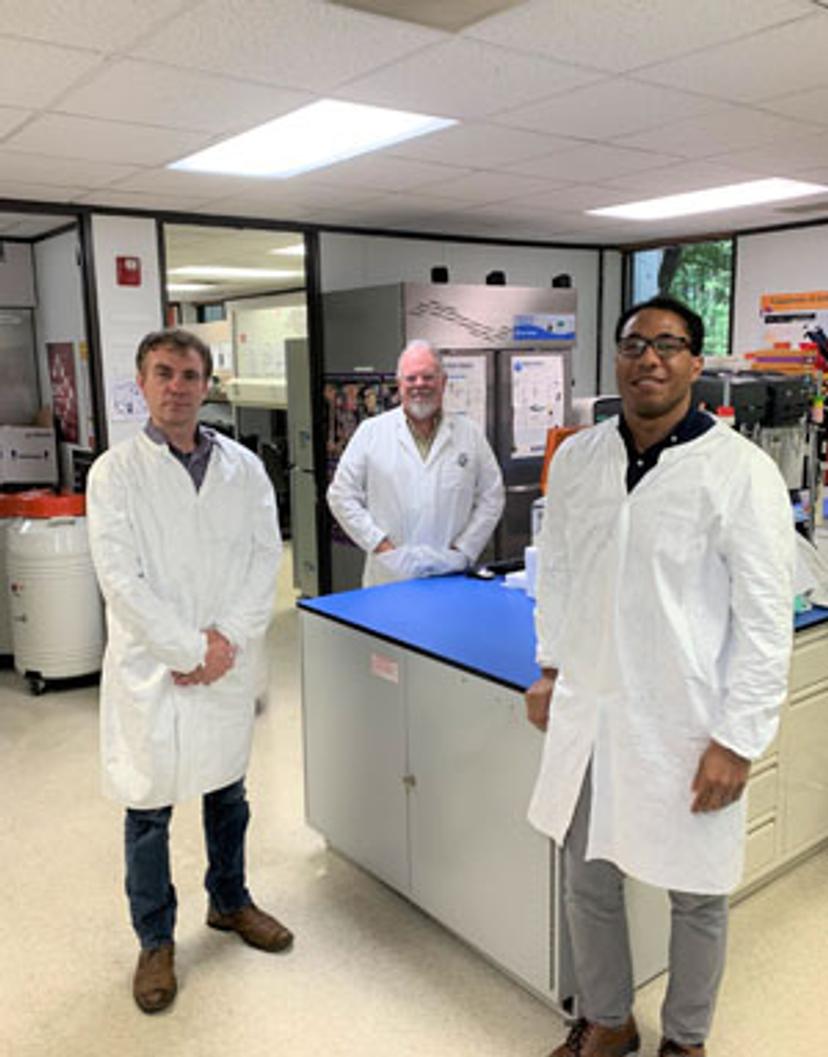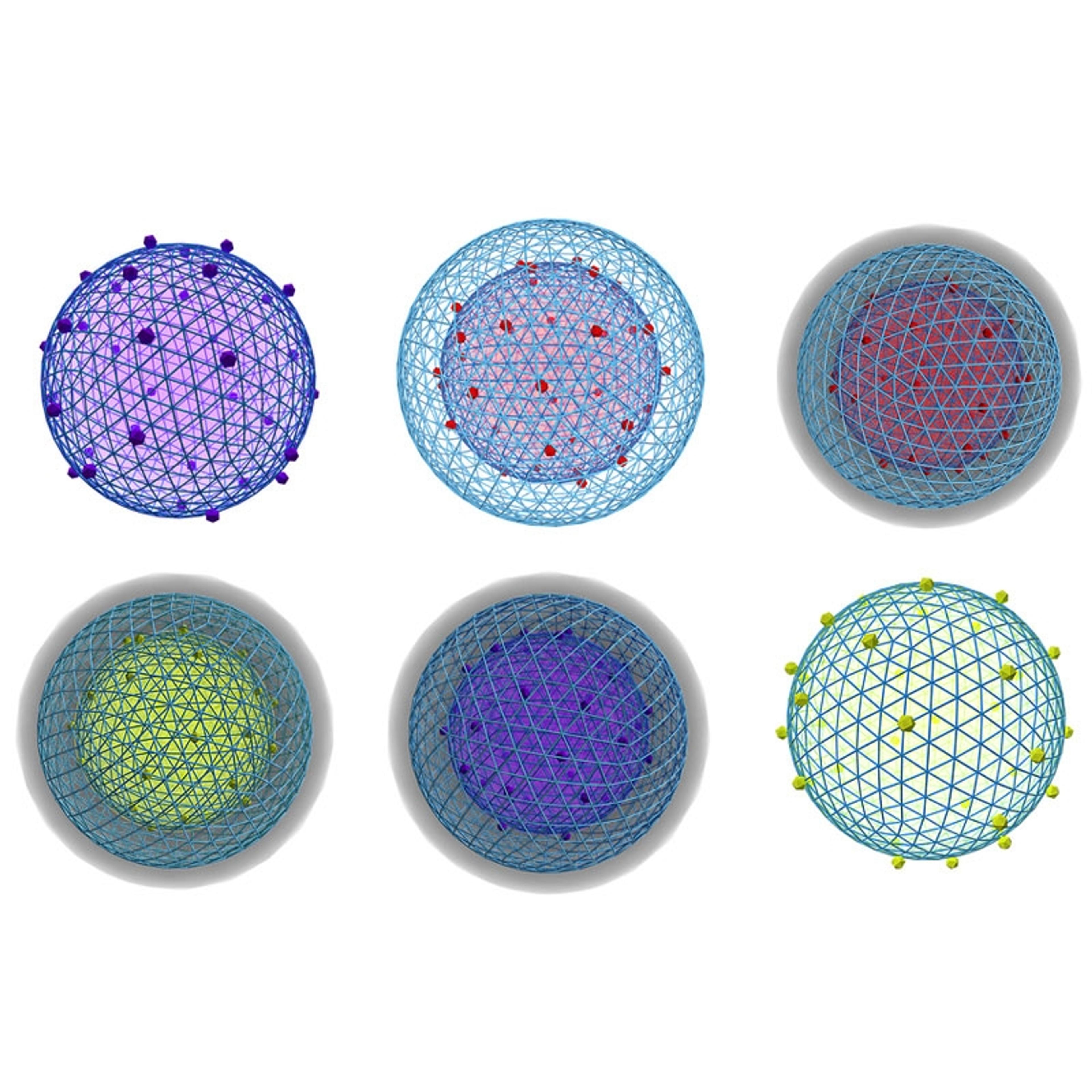Nanotrap particles offer a simple and rapid way to concentrate extracellular vesicles and exosomes
Dr. Clifton Ray discusses the potential of Nanotrap particles to advance extracellular vesicle research, and how his team is using them to break down barriers in isolation, screening, and disease diagnostics
22 Jul 2020
Extracellular vesicle research, particularly around exosomes, is an area of growing interest among scientists, with studies suggesting that exosomes could help solve many of biology’s unanswered questions. Exosomes have been investigated for their role in cell-to-cell communication and the evolution of disease states.
In this exclusive SelectScience interview, Dr. Clifton Ray, Senior Scientist at ZenBio, along with his colleagues, Senior Scientist Dr. Michael Van Kanegan, and Dr. John W. Ludlow, Vice President at ZenBio, discuss the team’s work on exosomes and their potentially regenerative properties, sharing challenges the team has faced and the emerging solutions. Ray reveals how Nanotrap® particles are helping them achieve their research goals, by enriching exosome capture, which might enable them to serve both diagnostic and prognostic purposes. The trio explains how Nanotrap particles have made it possible to rapidly isolate and concentrate extracellular vesicles and exosomes for downstream applications, and ultimately look ahead to an ambitious future.

SS: Tell us a bit about ZenBio and your current research
CR: ZenBio is a small biotech company located in Research Triangle Park, North Carolina. Since 1995, we have successfully provided primary human cells to our customers and clients. ZenBio has continued to grow and we now provide cell-based kits and research services, whilst currently exploring exosomes. As a senior scientist, I assist leading our exosome team, a team associated with the R&D of exosome analysis, including biomarker expression, as well as the investigation of exosome translational effects in vitro. We will soon be expanding our work to in vivo investigations.
MVK: We have really jumped onto the new facet of exosome research since there are now a lot of interesting aspects we can investigate in this area. We have expertise in human cell biology and primary cell culture. We are now able to grow, capture, purify, characterize, and provide exosomes to our customers and clients for therapeutic-based or research-based applications.
JWL: ZenBio views itself primarily as an enabling company. We provide goods and services to a variety of academic and commercial labs, to essentially ensure their research is accomplished in a reasonable time frame. Even though we have decided to focus more on the R&D and potential regenerative properties of exosomes, there is a lot of work being conducted in the field to take exosomes and use them for both diagnostic and prognostic purposes.
SS: Tell us about your objectives around human extracellular vesicles (EVs)
CR: Our vision is to continue expanding the exosome field and pushing the limits on what we can do with EVs, specifically exosomes. We currently use ultracentrifugation techniques, as well as size-exclusion chromatography and tangential flow filtration to isolate and purify these exosomes. We're now trying to figure out the different ways to enhance and capture exosomes in order to use them for transitional studies, wherein we take advantage of the properties of the exosomes and start generating biological effects that we wish to obtain, both in vitro and in vivo. Eventually, this will also enable us to look at exosome characterization and understand what is happening within a patient. When investigating disease states, we can see from liquid biopsies whether the patient is recovering from the disease and what the state of the disease is, which is where we think we can come into play.
SS: What are your current challenges?
CR: Our biggest challenges are being able to produce enough of the EVs needed for analysis, obtaining the appropriate volume of EVs, and ensuring that the EV sample is effectively concentrated for analysis. It can be difficult to gauge what is in our sample, since there can be many different proteins, DNA, and RNA that exist in liquid biopsies or conditioned media when we are working in vitro. It can be challenging to look for a specific marker in EVs, and we do not yet have a system to determine how this can be achieved.
JWL: The Nanotrap technology is helping us concentrate the EVs and exosomes. Regarding concentration, some of the tools we use for analysis require only microgram amounts of protein, and when we are working with exosomes, we are looking at picogram to nanogram amounts. So, a new way to concentrate these small concentrations is our next step.
MVK: The exosome field is rapidly evolving. It is our goal to try to stay at the forefront of this evolution, to predict or even help push the field forward.
SS: What tools are you currently using to help you achieve your goals?
CR: The Nanotrap technology is adding value to our research. We essentially introduce the Nanotrap particles within our sample solutions and observe how we can concentrate our samples down after size-exclusion chromatography (SEC). We have found that when we do the SEC, we are left with a sample volume that is too large and too dilute for what we need to do downstream. The Nanotrap particles enable us to concentrate our EVs down to a smaller volume so that we can effectively work with them in other assays that we wish to run with the EVs. We also use several other different tools including ultracentrifugation, which is somewhat the standard method to use for EV isolation. We also use immunoprecipitation beads and antibody-capture methods.
JWL: To give an idea of scale, the fractions that we take off the SEC column are around a milliliter. We may have 1012 EVs in the milliliter, however, for our experiment, we need to reduce this down to a volume of 25 microliters and still have the 1012 EVs. SEC will not permit this, so we have had to explore an alternative way to concentrate our samples down by incorporating the Nanotrap technology.
SS: What are the key benefits of using the Nanotrap particles?
CR: In regard to implementing the technology into our laboratory space, the Nanotrap technology is a very simple and straightforward technology. We find these particles are highly efficient in capturing the EVs themselves, as well as the EV populations we’re interested in, where we have seen a high percentage of capture from serum and from our conditioned media. We are able to rapidly concentrate EVs taken from donated liquid biopsies, and therefore we can enhance our basic science research because we have saved time and resources with this technology.
Another really interesting thing that we learned about Nanotrap particles is that they do not appear to cause or elicit a cytotoxic response. We conducted a preliminary investigation on cultured peripheral blood mononuclear cells taken from human donors. We used the Nanotrap particles and observed the cytotoxicity by increasing the dosage of the Nanotrap particles of cultured cells. We found from our lab data assays that these particles did not cause or elicit a cytotoxic response that was any greater than the control media itself.
MVK: A key benefit to the Nanotrap particles is the quick turnaround time, as well as ease of use, without the need for expensive equipment, therefore we are obtaining results quickly and saving money with this technology.
SS: What do you see as the future developments in this area?
CR: We are now able to run downstream analysis very rapidly so that we can better understand what EVs or exosomes mean in the context of human disease and pathology. Another way we can see this expanded upon is by releasing the EVs from the Nanotrap particles. Once we have achieved this, we will be able to enhance our processes in vitro, where we plan to do more translational approaches around EVs and exosomes. Fortunately, we have grants to enable us to investigate EV and exosome therapeutics within different disease states; as such, we could use the Nanotrap particles for some of those experiments.
JWL: It is quite possible that the Nanotrap particles could be used as a delivery vehicle for a large number of exosomes, which could potentially have therapeutic value. One of the reasons why Clifton Ray performed the PBMC cytotoxicity study was to make sure that when we use these particles, they will not harm or kill the cells. We also want to conduct capacity studies, to try to figure out how many exosomes can adhere to the particles, which we are hoping to conduct in the near future.

